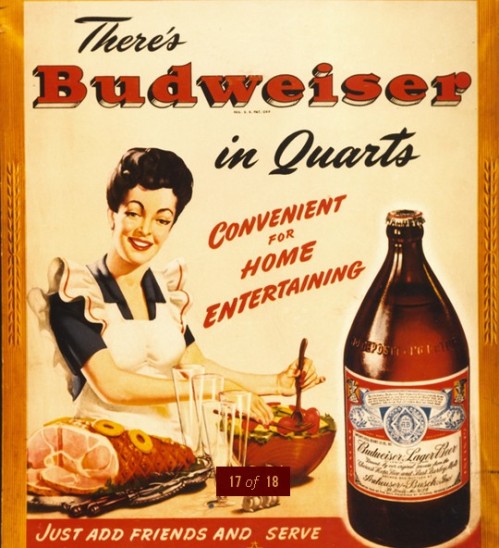I didn’t drink a Budweiser on New Year’s Eve, but I woke up the next day thinking about it. Specifically, how a company with such a strong brand has had such staying power for more than 100 years – 13 of which were spent not producing its most popular product because of Prohibition.
In 2010, Horizon Research Group analyzed the situation from a short seller’s point of view and came up with this gem of a report, which starts off with an understated bang:
Some general questions that are worth a short seller’s consideration include asking what happens to a company when its primary product has a precipitous decline in sales within a short time frame, and how robust and resilient can a company be in that situation.
 They concluded that while product diversification was a good idea, what really saved the company was its ability to sell the raw materials used to make beer – primarily barley. Translation: The cereal-based, non-alcoholic beverage called Bevo, which featured this message on the bottle – The All-Year-Round Soft Drink. Appetizing – Healthful – Nutritious – Refreshing. Milk or water may contain bacteria. BEVO never does. – wasn’t a hit.
They concluded that while product diversification was a good idea, what really saved the company was its ability to sell the raw materials used to make beer – primarily barley. Translation: The cereal-based, non-alcoholic beverage called Bevo, which featured this message on the bottle – The All-Year-Round Soft Drink. Appetizing – Healthful – Nutritious – Refreshing. Milk or water may contain bacteria. BEVO never does. – wasn’t a hit.
On this point, the Horizon Research report notes, rather dry-countyly:
Everyone agreed that there wasn’t a taste difference, but they just didn’t want to buy it. The forces in favor of Prohibition used this fact to their advantage when they advocated for maintenance of the Amendment. They claimed that lack of customer acceptance of the non-alcoholic beer, which had no discernible taste difference from alcoholic beer, meant that people weren’t drinking beer for its taste and flavor; they were drinking it for another reason.
So what’s the point of this post? Only this: In trying to figure out how Anheuser-Busch survived Prohibition, I discovered, through its website, that:
- You have to verify your age before you can actually log in, which all alcohol-related sites have. This Smashing Magazine article sums up the industry logic, or lack thereof, behind this move – compounded, in A-B’s case, by the fact that the age-verification slots spin like a slot machine, combining two of America’s older vices – alcohol and gambling – with one of the newer ones – the Internet. (Is now the time to mention that my 10-year-old daughter can name five different beers based on the ads she’s seen during football games? “Why do they always show beer ads during football games?” is a question she has stopped asking.)
- Like the Mob, there are at least six domestic and eight foreign “families.” True to its name, the one whose connection to “The King of Beers” that shocked me the most was Shock Top. And all this time, I thought I was helping some tiny microbrewery start-up on some Seattle-area island sustain its mission for peace, love and rock-climbing every time I purchased a six-pack of Belgian White at the 7-Eleven. (Like Lou Reed sings in “Sad Song”: “Just goes to show how wrong you can be.”)
- The Budweiser Clydesdales made their debut when Prohibition ended. They were used to celebrate the repeal of Prohibition in 1933, including a re-enactment of the first shipment of legal Budweiser to FDR at the White House. (The Dalmatian mascot was added in 1950.) Even then, a horse-drawn wagon full of beer was a big marketing win.
- And finally, there’s this: Just add friends and serve!


Pingback: How To Earn Budweiser Points – All About budweiser1795 stuff